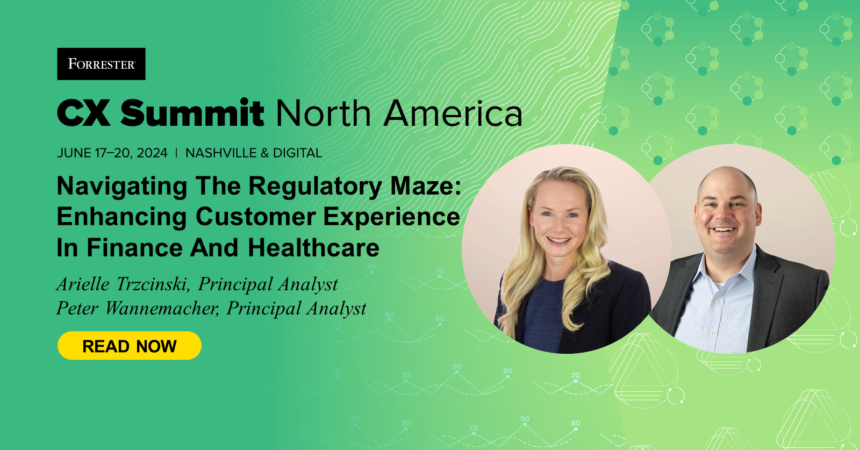Building great customer experiences in regulated industries is not for the faint at heart. From interoperability challenges to the threat of hefty fines, firms in industries like financial services and healthcare face daunting roadblocks. Many companies in these industries find purpose in helping people improve their well-being in a range of ways, from assisting patients with lifesaving care to guiding individuals to financial freedom. No regulation was designed to ruin the customer experience, yet poor experiences in regulated industries abound.
Much of this comes down to a single point of failure: data. Today, regulation tends to focus on data — from the protection of data for the best interest of consumers to supporting competitive differentiation. These requirements bring unintentional friction that impede and frustrate customers as they try to achieve their goals.
Data Challenges Create Common Ground For Healthcare And Financial Services
While financial services and healthcare serve vastly different customer needs, they share many common challenges, especially when it comes to data management and usage. In healthcare, over 80% of data is unstructured, making it challenging to decipher and use in decision-making. In financial services, more than 75% of US consumers would use open banking, yet most banks don’t offer account aggregation. As highly-regulated industries, healthcare and financial services firms struggle with:
- Holistic views of a person’s broader medical and financial health. Healthcare and financial services providers alike face the difficult task of assessing individuals’ situations — be they medical or financial — even without a complete view of the full context of who they are and what factors contribute to their current state. Within banking and financial services, this includes a broad view of assets and liabilities, while in healthcare it encompasses a wide range of medical factors. In both cases, regulations make capturing, aggregating, and synthesizing data from all sources difficult — even when the reasons for those regulations are understandable and defensible on their own grounds.
- Longitudinal data to get a clear picture of someone’s journey over time. In both financial services and healthcare, a person’s current and future state can best be predicted and improved by first understanding their past. In both industries, this information can be misused — which is what has prompted strong regulations — yet any firm operating in these markets must work within these regulations. Leaders at healthcare and financial services providers must enable users to use longitudinal data — and current-state holistic data — to help them better understand and strengthen their physical, mental, and financial health.
Even if we have some of the pieces of the puzzle, we struggle to complete the picture with high fidelity, leaving critical sections missing or fuzzy at best. How do we steer through the labyrinth of regulations, ensuring we remain within the prescribed limits?
Join Us At CX Summit NA!
Join us for an exciting discussion about the intersection of regulation, data, and customer experience at CX Summit North America on June 17–20. In our panel “When Experiences Meet Regulations,” we will share examples of how leading organizations are taking on regulatory challenges to deliver improved customer experiences. Attendees will learn:
- What expectations consumers bring to their experiences with regulated industries.
- How brands in regulated industries design great experiences.
- How brands deal with data restrictions and controls in their experiences.
Learn more about CX Summit North America and register.








